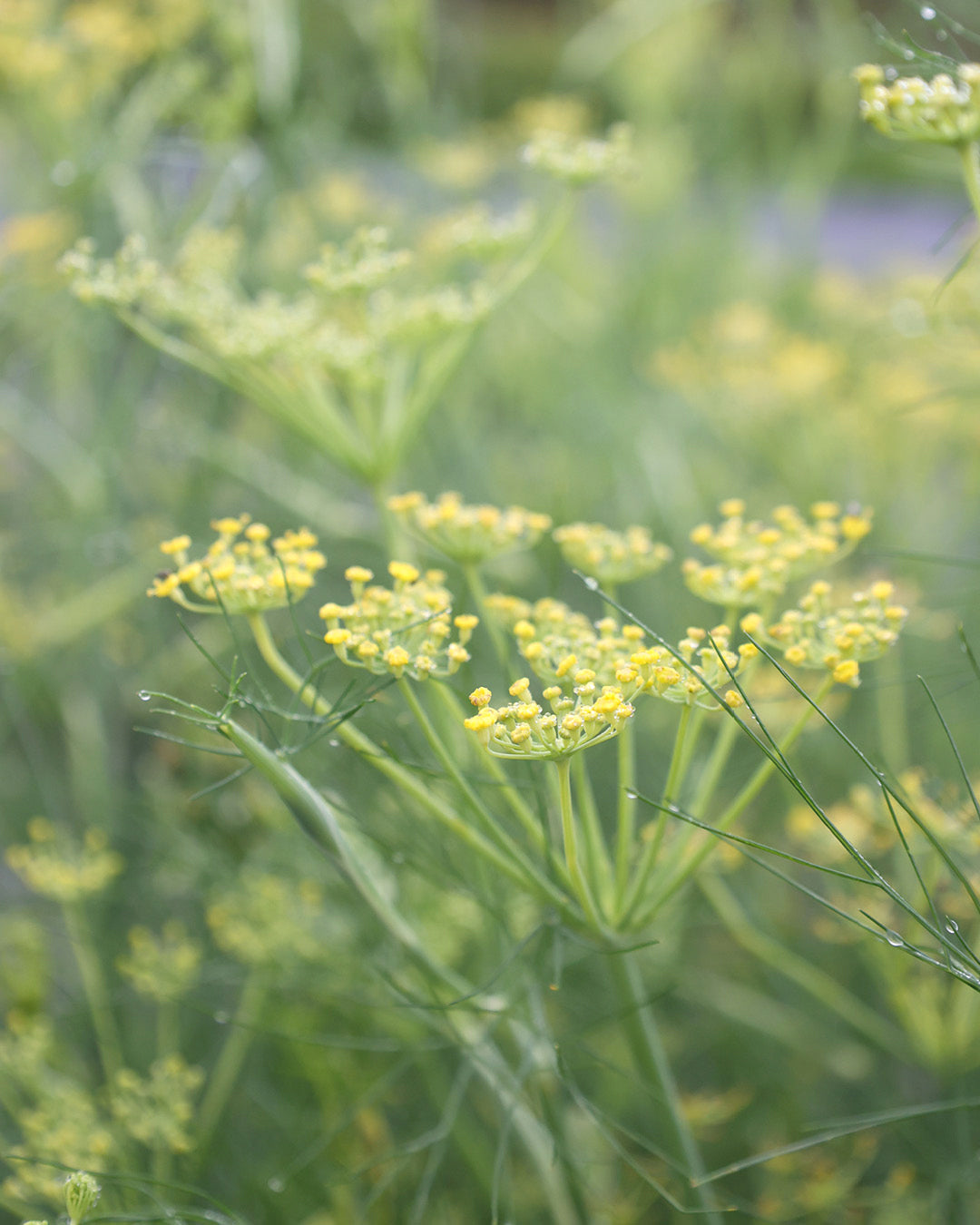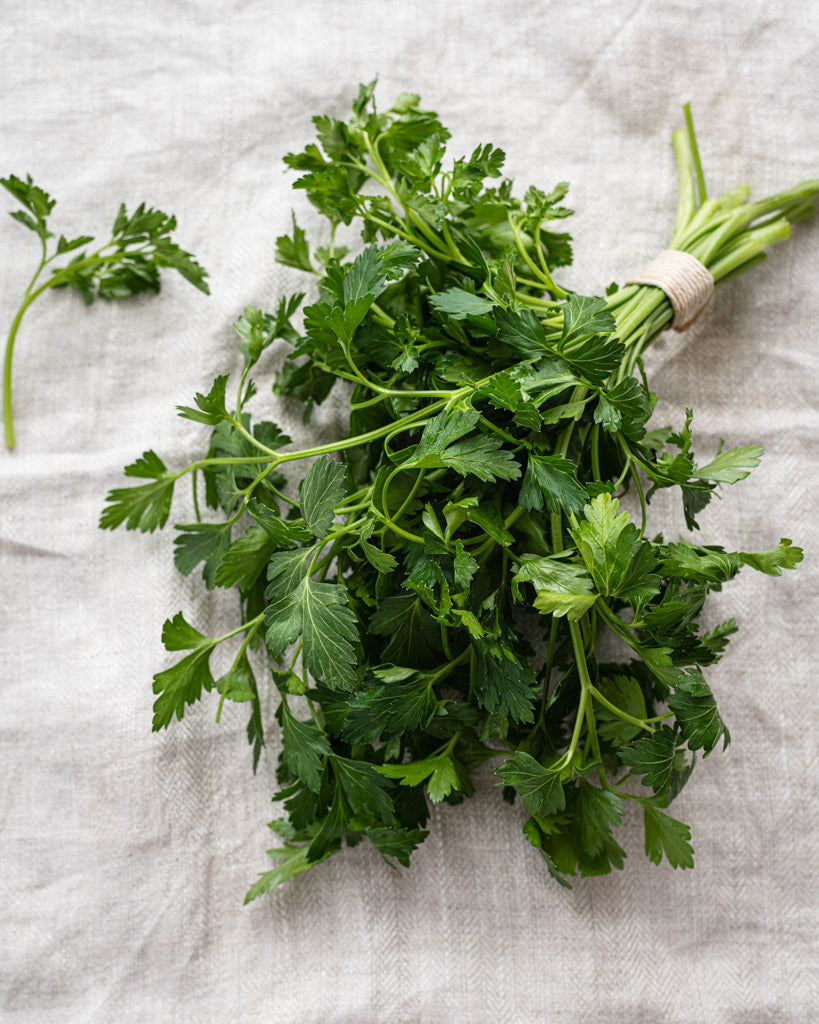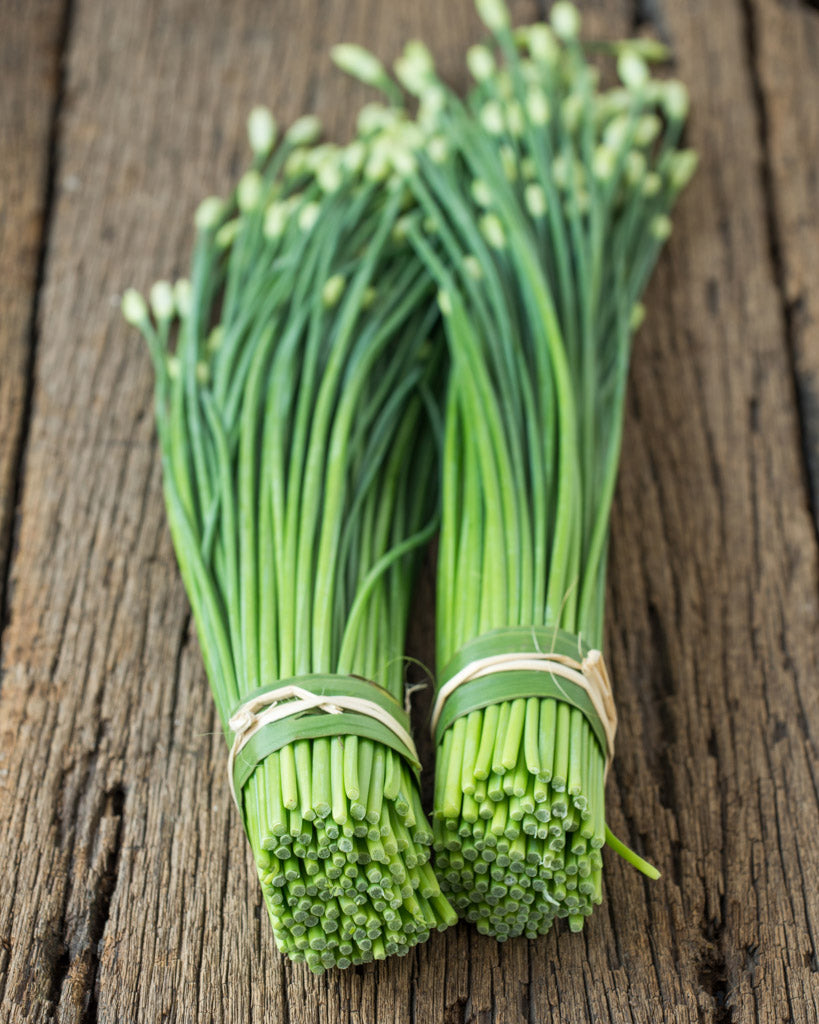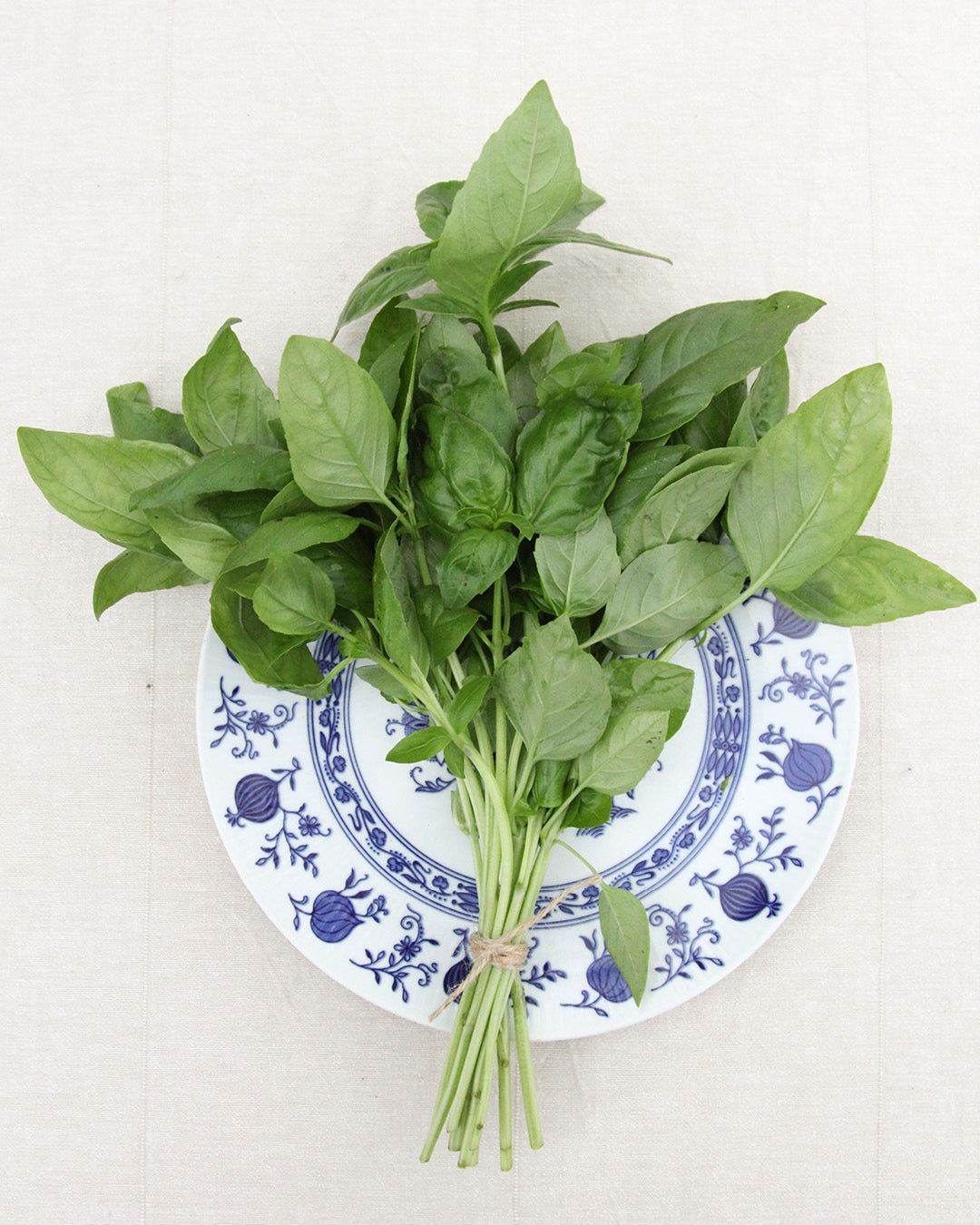Potato (Solanum tuberosum)
This tuber plant, a member of the nightshade family, is a highly versatile and nutritious vegetable. Whether simply cooked with a little butter, as a puree, casserole, or fries, there's truly something for every taste! Small, fresh potatoes from one's own garden, in particular, make many gardeners' hearts beat faster.
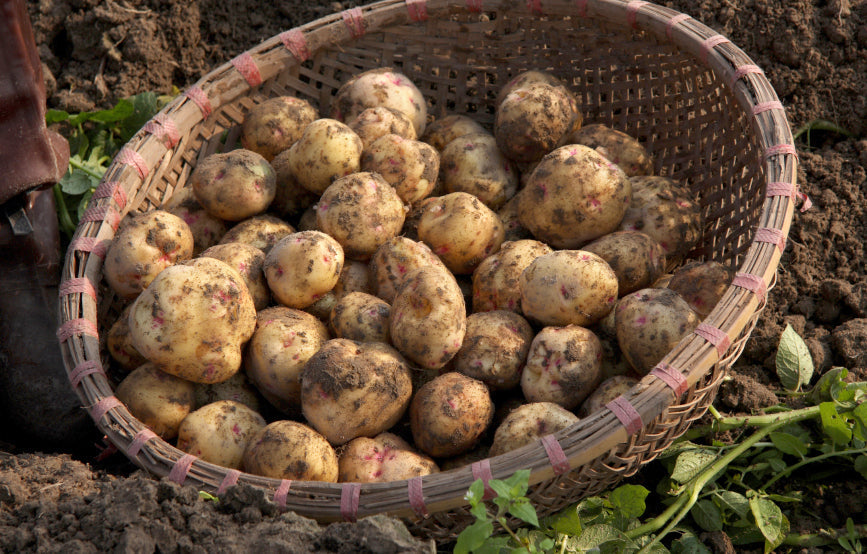
Planting time – When is best?
As soon as there is no longer any danger of frost in spring and the soil has warmed up to 7 degrees, the seed potatoes are planted in the ground.
Potato cultivation – How does it work?
For successful potato cultivation, it's best to use seed potatoes, which are available in stores starting in winter. These should be pre-germinated in a bright, cool place. Place them in egg cartons with most of the "eyes" facing upwards. After a while, strong shoots will develop. Before planting the seed potatoes, you can remove a few of the shoots to encourage larger potatoes.
The seed holes should be 15 cm deep and 40 cm apart between rows. The distance between seed potatoes should be a good 30 cm. It is also important that the potatoes are planted in the hole with the shoots facing upwards. Only cover the tubers halfway with soil and do not press it down firmly to prevent the sprouts from breaking off. As soon as the leaves sprout, the potatoes are completely covered with soil. After about three weeks, the soil is mounded up around the plants. This process is repeated after another two weeks, so that the potatoes are covered with 20 to 30 cm of soil.
Note: Potatoes grown in light will turn green and be inedible.
Location – Where is best?
Potatoes prefer deep, loose and well-drained soils in sunny locations.
Care – What needs to be done?
It's best to fertilize the soil with compost or old farmyard manure in the fall before planting. Potatoes should be weeded regularly. When hoeing, be careful not to damage the growing nodules. Horsetail broth has a preventative effect against fungal diseases. If the Colorado potato beetle appears, dust the plants with algal lime.

Harvest – What should you consider?
Harvest time begins when the potato plant's leaves turn yellow and begin to wilt. Level the potato beds to normal soil level and remove the entire plant from the soil, ideally with a three-pronged rake. Harvesting is best done in dry weather so the potatoes can air dry for a day. For storage, place the potatoes in crates and keep them in a frost-free, dark place.
Mixed culture – What are good neighbors?
Potatoes grow well alongside cabbage, beans, spinach, marigolds, marigolds, and corn. Avoid planting other nightshade plants, such as cucumbers and peas, in your garden.

Botany – What kind of plant is this?
Potatoes grow as herbaceous plants, upright or climbing, and can reach a height of up to one meter. Their leaves are alternate, odd-pinnate, short-stemmed, and can grow up to 30 cm long and 15 cm wide. They form stolons in the soil, which transform into tubers through thickening.
The individual leaflets are hairy and usually vary in shape and size; for example, they can be green, oblong to ovate, or tapered. The flowers are cup-shaped and white to whitish-blue in color.
Potatoes typically have a light brown skin and white-yellow flesh. However, there are also varieties with very different colors, such as purple skin and red flesh. The flavors of the different varieties also vary greatly, and their cooking properties, ranging from floury to waxy, make them suitable for specific dishes. The small tubers contain many important vitamins, minerals, and vegetable protein, and their carbohydrate content makes them pleasantly filling.
Cultural history – How did the potato come to us?
In the 16th century, the Spanish brought the potato back to Southern Europe from their voyages of discovery in South America. It wasn't until the end of the 17th century that potato cultivation became established in Central Europe. Within a short time, the potato became indispensable for the diet of the Central European population. It was cultivated in particularly large quantities in northern and central Europe, feeding countless people. The potato relatively quickly replaced the grain porridge that had been common until then. Its high vitamin C content helped people survive the winter and also provided them with vegetable protein.
Around 1900, 340 kilos of potatoes were consumed per capita annually; today, consumption has declined to 63 kilos. Half of this amount is consumed in processed form, usually in the form of chips or fries. Boiled potatoes are becoming increasingly rare.
However, thanks to the wide variety of varieties and preparation options, the potato is an unparalleled all-rounder and should not be missing from any vegetable garden.
TEXT: Merle Hildebrandt

